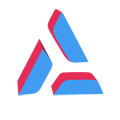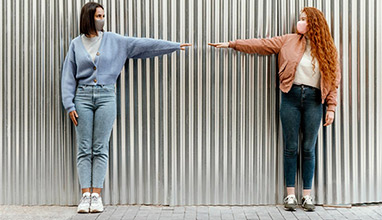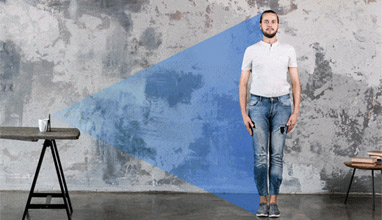How advances in technology are driving the future of made-to-measure fashion and body measuring
Tailoring is about individually made clothes. Looking back in history, the desired fit of bespoke clothing was achieved through many long fittings where master tailors would painstakingly adjust patterns based on many measurements to achieve the incredible fit and handwork that warranted the high cost of bespoke clothing.
Today there is an evident resurgence of bespoke and made to measure companies in the fashion industry partly driven by size inclusivity and a desire to find clothing representative of a consumer’s own unique taste, and partly driven by a new generation who is focused on sustainable practices. As the genuine demand for custom clothing continues to grow, optimizing many of the traditional practices using technology to bring efficiency to the supply chain is making it possible for brands to offer high quality and customized products at prices that consumers can afford.
This article is devoted to one of the first stages – taking measurements, with the spotlight on technological advances to replace the manual, time-consuming, and costly process of hand measurements using a measuring tape.

The Evolution of Body Measuring
The history of the measuring tape
The first measuring tapes as we know them today came into use in the early 1800s. They were considered revolutionary at the time as they enabled tailors to calculate the proportions between different body measurements, and allowed for the development of drafting systems. With the introduction of cutting systems and then the sewing machine, machine-based clothing systems paved the way for ready to wear.
Over the course of the 19th and 20th centuries, the rise of machine-made clothing, casual lifestyles, and shopping malls contributed to the decline of custom and bespoke clothing and true bespoke was an art that came with a high price tag and long lead times with many fittings that only a few could afford.
The rise of fast fashion led to the incredible growth of mass-market retailers over the last two decades. In the early 2000s, as consumers began to turn to the internet to shop, this business model created a sizing and fit monster which last year resulted in over $150 billion in returned clothing. Today consumers are frustrated with the complexities of buying clothing online and fashion companies are struggling with understanding what consumer body shapes look like. Add to this a tremendous focus on size inclusivity and a spotlight on the industry’s contribution to environmental waste. As a result, we are seeing a resurrection of the made to measure business model. Advancements in technology are allowing innovative companies to tailor individual garments to the customer’s size, body type and preference.
The Disruption of Manual Measurements
Measuring a customer is only as accurate as the person who is using the measuring tape. Deploying professional tailors to clients’ homes or places of business is both time-consuming and costly. For businesses looking to scale this process, this means hiring an army of tailors nationally or internationally which is cost-prohibitive and also creates inefficiencies in measuring standards. Precision can’t always be perfect, even for the most seasoned professionals.
Some companies ask customers to measure themselves and have implemented lengthy video tutorials or measuring guides into their checkout process. Still, these methods expect that a consumer has a measuring tape at home and can learn how to use it properly. This leaves the opportunity for a huge margin of error.
As the demand for well fitted and customized clothing increases, made to measure and bespoke companies are turning to advances in technology to help optimize costs and efficiency and deliver a better experience for their customers.
3D Body Scanners
3D body scanners are designed to provide the full body of an individual in three dimensions. The result is a specific 3D model that shows the exact body shape and offers precise information concerning the body measurements, posture analysis, and different properties of the human body. The scanners usually look like a closed booth – a cabin with cameras and sensors. A client stands in the middle of the cabin and holds a pose for the time of scanning. The 3D software reconstructs the final 3D model by “stitching” the images together.
The most sophisticated scanners can provide data on hundreds of measurements and are used not only in fashion, but also in healthcare, fitness, entertainment and 3D printing of any kind.
Because of its size and materials, modern physical 3D body scanners are quite bulky and they still require physical presence of the customer which means unnecessary travel time and costs.
3D scanners are also very expensive costing upwards of $10K and with some costing more than $50K. The more accurate a machine is, the more expensive it becomes. Sometimes, sensors that are affordable produce only reasonably precise information.
Meanwhile, the requirement that individuals do not move during scanning produces another problem. Even a small movement can mean several millimeters are compromised, and the scan is not acceptable. The sensors of the scanner are highly sensitive and react to temperature, lighting, and time. Getting all these slight distortions to match up precisely is a challenging order.
Mobile Body Scanning
Recent advances in AI-powered technologies such as computer vision and deep learning models have enabled next-gen mobile body scanning solutions. Most body scanning solutions ask the customer to take several photos of themselves and deliver the body data within seconds or minutes back to the business. These solutions deliver significant benefits to made to measure businesses and their customers including convenience, portability, and lower costs.
Mobile body scanning solutions enable the customer to digitally measure themselves wherever they choose allowing businesses to meet the customer’s needs and alleviating the time and expense to be manually measured. Additionally, smartphone scanners can measure dressed people which means even more convenience and ease.
One of the breakthroughs that mobile body scanning technology brings to modern made to measure businesses is instantly providing additional valuable data points about the consumer beyond just measurements. For example, 3D models and body shape data that can be segmented by location, height, gender, race, and age.
Using this advanced technology to create rich customer profiles based on measurement and shape data gives savvy made to measure brands new insights into their customer paving the path for a new generation of custom-centric fashion.
The ‘Mobile Tailor’ self-service solution built by 3DLOOK helps made-to-measure businesses receive precise body data of their customers remotely. The solution, which does not require any technical expertise to use, generates +65 points of measure from just two photos taken by the customer in under 45 seconds. The measurement data can then be accessed by each business through a personal workspace. For businesses that are using 3D fashion design software, there is also an option to receive the customer’s unique 3D Body Avatar.

‘Mobile Tailor’ User Flow: your customer takes 2 photos with any smartphone on any background, and in under a minute — you get the customer body data.
Unlike other body measuring solutions, ‘Mobile Tailor’ is a self-service tool that runs without any complicated website integrations. Businesses can start using it immediately after the registration, no matter where they are, at home or at the office. The customers’ flow is simple and secure: each customer receives a personal unique measurement link and photos can be made with any smartphone. You get all the measurements of your customers on your own personal dashboard.
The Future of Custom Fashion
The demand for custom fashion that is inclusive and representative of the many sizes and shapes of today’s consumer has created a huge opportunity to rethink the made to measure supply chain and the future of on-demand clothing.
Mobile body scanning will disrupt the current broken size system and help to reposition the made to measure sector to provide perfectly fitting clothes to tech-savvy customers who understand their bodies, are fed-up with the hassle of returns, and care about the environment.
For the fashion industry who has been reeling with the mass disruption caused by online shopping, mobile body scanning provides made to measure businesses with a way to stand out, attract, and engage new customers by providing ease, convenience, and experience.
Originally published at 3DLOOK
Hits: 33863 | Leave a comment










